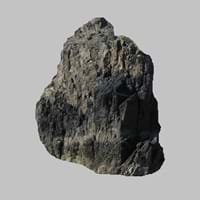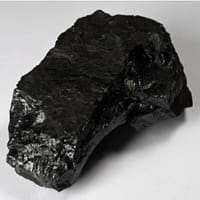Definition
Metapelite is an old and currently not widely used field geological term for a clay rich fine-grained clastic sediment or sedimentary rock, i.e. mud or a mudstone
Coal is a combustible black or brownish-black sedimentary rock usually occurring in rock strata in layers called coal beds
Discoverer
Unknown
John Peter Salley
Etymology
From Pelos or clay in Greek
From the Old English term col, which has meant mineral of fossilized carbon since the 13th century
Class
Metamorphic Rocks
Sedimentary Rocks
Sub-Class
Durable Rock, Medium Hardness Rock
Durable Rock, Soft Rock
Group
Not Applicable
Not Applicable
Other Categories
Coarse Grained Rock, Fine Grained Rock, Medium Grained Rock, Opaque Rock
Coarse Grained Rock, Fine Grained Rock, Medium Grained Rock, Opaque Rock
Texture
Foliated
Amorphous, Glassy
Color
Dark Greenish - Grey, Green, Light Green, Light Greenish Grey
Black, Brown, Dark Brown, Grey, Light to Dark Grey
Durability
Durable
Durable
Appearance
Banded
Veined or Pebbled
Interior Uses
Decorative Aggregates, Interior Decoration
Not Yet Used
Exterior Uses
As Building Stone, As Facing Stone
Not Yet Used
Other Architectural Uses
Curbing
Not Yet Used
Construction Industry
Cement Manufacture, Construction Aggregate, for Road Aggregate
Cement Manufacture, for Road Aggregate, Making natural cement, Steel Production
Medical Industry
Not Yet Used
Not Yet Used
Antiquity Uses
Artifacts
Artifacts
Commercial Uses
Commemorative Tablets, Creating Artwork
Alumina Refineries, Electricity Generation, Liquid Fuel, Manufacture of Soap, Solvents, Dyes, Plastics and Fibres, Paper Industry
Types
Not Available
Peat, Lignite, Sub-Bituminous Coal, Bituminous Coal, Anthracite, Graphite
Features
Easily splits into thin plates, It is One of the Oldest, Strongest and Hardest Rock
Helps in production of Heat and Electricity, Used as fossil fuel
Archaeological Significance
Monuments
Not Yet Used
Not Yet Used
Famous Monuments
Not Applicable
Not Applicable
Sculpture
Not Yet Used
Not Yet Used
Famous Sculptures
Not Applicable
Not Applicable
Pictographs
Used
Not Used
Petroglyphs
Used
Not Used
Figurines
Not Yet Used
Not Yet Used
Formation
Due to change in environmental conditions, rocks are heated and pressurized deep inside the Earth's surface. Metapelite is formed from the extreme heat caused by magma or by the intense collisions and friction of tectonic plates.
Coal forms from the accumulation of plant debris in a swamp environment which is buried by sediments such as mud or sand and then compacted to form coal.
Mineral Content
Albite, Chlorite, Quartz
Analcime, Apatite, Barite, Calcite, Chalcopyrite, Chlorite, Chromite, Clausthalite, Clay Minerals, Crandallite Group, Dolomite, Feldspar, Galena, Gypsum, Marcasite, Muscovite or Illite, Pyrite, Quartz, Siderite, Sphalerite, Zircon
Compound Content
Aluminium Oxide, CaO, MgO
Carbon, Hydrogen, Nitrogen, Oxygen, Sulphur
Types of Metamorphism
Not Applicable
Burial Metamorphism, Cataclastic Metamorphism, Regional Metamorphism
Types of Weathering
Biological Weathering, Chemical Weathering, Mechanical Weathering
Not Applicable
Types of Erosion
Chemical Erosion, Coastal Erosion, Water Erosion, Wind Erosion
Not Applicable
Grain Size
Medium to Fine Coarse Grained
Medium to Fine Coarse Grained
Fracture
Fibrous
Conchoidal
Porosity
Highly Porous
Less Porous
Luster
Earthy
Dull to Vitreous to Submetallic
Cleavage
Not Available
Non-Existent
Toughness
Not Available
Not Available
Specific Gravity
3.4-3.7
1.1-1.4
Transparency
Opaque
Opaque
Density
0-300 g/cm3
1100-1400 g/cm3
Resistance
Heat Resistant, Impact Resistant, Pressure Resistant
Heat Resistant
Deposits in Eastern Continents
Asia
Not Yet Found
Bangladesh, Burma, Cambodia, China, India, Indonesia, Kazakhstan, Malaysia, Mongolia, Pakistan, Turkey, Vietnam
Africa
Western Africa
Botswana, Kenya, Morocco, Mozambique, South Africa, Tanzania
Europe
United Kingdom
Belgium, Bulgaria, England, France, Germany, Greece, Hungary, Kosovo, Netherlands, Norway, Poland, Romania, Serbia, Slovakia, Slovenia, The Czech Republic, Ukraine, United Kingdom
Others
Not Yet Found
Not Yet Found
Deposits in Western Continents
North America
Not Available
Canada, Mexico, USA
South America
Brazil, Colombia, Ecuador
Brazil, Chile, Colombia, Venezuela
Deposits in Oceania Continent
Australia
Central Australia, Western Australia
New South Wales, Queensland, Victoria
All about Metapelite and Coal Properties
Know all about Metapelite and Coal properties here. All properties of rocks are important as they define the type of rock and its application. Metapelite belongs to Metamorphic Rocks while Coal belongs to Sedimentary Rocks.Texture of Metapelite is Foliated whereas that of Coal is Amorphous, Glassy. Metapelite appears Banded and Coal appears Veined or Pebbled. The luster of Metapelite is earthy while that of Coal is dull to vitreous to submetallic. Metapelite is available in dark greenish - grey, green, light green, light greenish grey colors whereas Coal is available in black, brown, dark brown, grey, light to dark grey colors. The commercial uses of Metapelite are commemorative tablets, creating artwork and that of Coal are alumina refineries, electricity generation, liquid fuel, manufacture of soap, solvents, dyes, plastics and fibres, paper industry.










